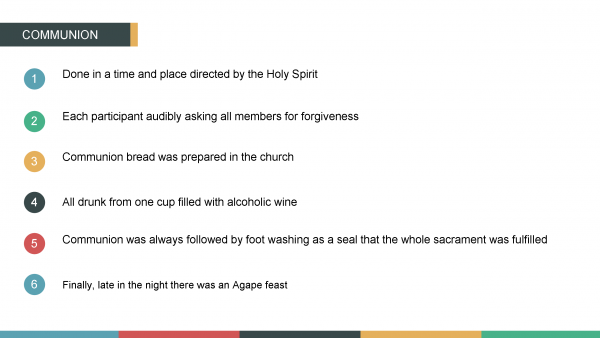Releasing Greek-Bulgarian Interlinear of the New Testament ONLINE
November 1, 2023 by Cup&Cross
Filed under Books, Featured, News, Publication

The day after All Saints Day in Bulgarian is celebrated as the Day of National Awakening. In honor and contribution to the National Awakening, we are proud to release the first Greek-Bulgarian Interlinear of the New Testament ONLINE @ https://evangelieto.com/
Evangelieto.com means The Gospel in Bulgarian and is also a common reference the New Testament texts. This new website is a natural continuation of Bibliata.com – the first Bulgarian Bible online, we released back in the cold winter of 1996.
For Easter 2015, after over eight years of hard work and much difficulties, Cup & Cross Ministries was able to complete and publish the first ever Greek-Bulgarian interlinear based on the Nestle-Aland 28/ UBS-4 texts. This first edition is dedicated to those students of the Bible, who prefer working with the original texts, rather than using the multitude of new Bible revisions often with religious and ideological orientation.
 For the 500th Anniversary of the Protestant Reformation, our Greek-Bulgarian Interlinear of the New Testament was presented in Bulgaria’s capital Sofia on All Saints Day 2017. The Greek Bulgarian Interlinear of the New Testament proposed the following solutions to the translation of the Bible in Bulgarian:
For the 500th Anniversary of the Protestant Reformation, our Greek-Bulgarian Interlinear of the New Testament was presented in Bulgaria’s capital Sofia on All Saints Day 2017. The Greek Bulgarian Interlinear of the New Testament proposed the following solutions to the translation of the Bible in Bulgarian:
1. A non-received text – Textus Haud Receptus
2. Critical Edition of the Greek New Testament alike Revised Textus Receptus, Tischendorf, Westcott and Hort, von Soden, Nestle-Aland, UBS and SBL GNTs
3. Literal translation from Greek made word for word without dynamic equivalents
4. Linguistic paradigm for repetitive parallel permutation structures in the Greek-Bulgarian translation alike form criticism of the Bible
5. Analytical Greek New Testament with complete morphology of the words
This new translation took several years to refine through multiple revisions, re-readings, and new re-translate where needed in order to produce an interlinear with priority advantages and distinctive features as follows:
1. The text is arranged in three lines – Greek original, literal translation and for the first time in a Bulgarian publication, an analytical apparatus with detailed morphology of the words.
2. A brand-new word for word translation, not phrase for phrase or simple imposed text on an already existing translation, challenges the reader into a deeper understanding of the Word.
3. Unnecessary text markers and explanations have been avoided because the parallel stylistics between Greek and Bulgarian are much more similar than other languages even when accompanied with Strong’s numbering.
4. The literal meaning of the text is shown without the dynamic equivalent characteristic of other interlinear editions.
5. All participles/predicates are literally translated avoiding the superimposition of like, as, which, etc., when they are not in the original text.
6. All definite articles are given as in the Greek before the word (not at the end part of the word as it is done in Bulgarian) even in the tradition of Nomina Sacra.
7. Enforced literalism on understandable New Testament terminology such as Lord/Master, church/ecclesia/congregation/gathering/assembly, baptism, etc. is avoided.
8. The literal word for word translation preserves case and gender as possible in over 90% of the New Testament text.
9. The applied critical apparatus in addition to the analytical morphology, includes designation of all verses and passages of critical difference with the Nestle-Aland GNT.
10. Hitherto missing morphology now provided, not only shows why a given word is translated in the chosen way, but enables the reader to navigate through more complex grammatical structures of the Greek language and understand them.
To translate the Bible is like to climb upon top of Mount Everest. You put everything at stake. You spend yourself to the last. You forget the pain and fatigue. You leave behind the unimportant things. You carry only the most important ones. Every breath is for eternity. Every step is last. And so, all the way to the top! The price is unbearable, but the reward is extraordinary. Because there, from the top, you finally see things differently. And it is almost impossible to go back down. Even if you can, down now feels different. And one can only hope others too will climb this peak, to perceive and translate for the next. So, that they too can see. For this reason, our interlinear is by no means the last. It is only a seed, which will bear long lasting fruit. For the generations…

SIGNS of the LAST DAYS: GOG and MAGOG
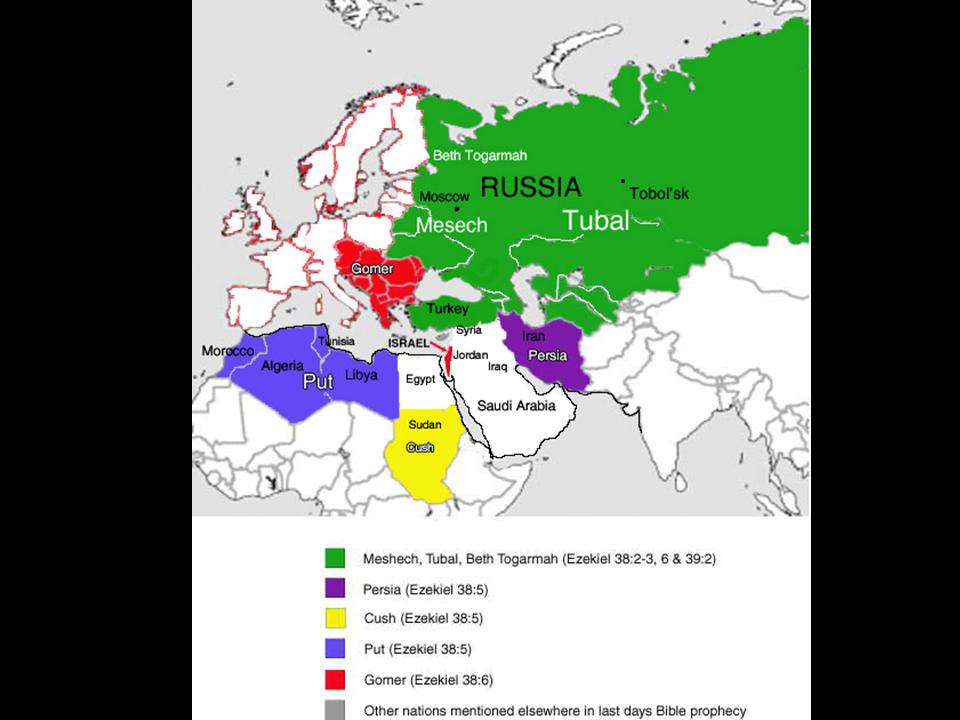
SIGNS of the LAST DAYS: Middle East Tension

SIGNS of the LAST DAYS: Israel Restored
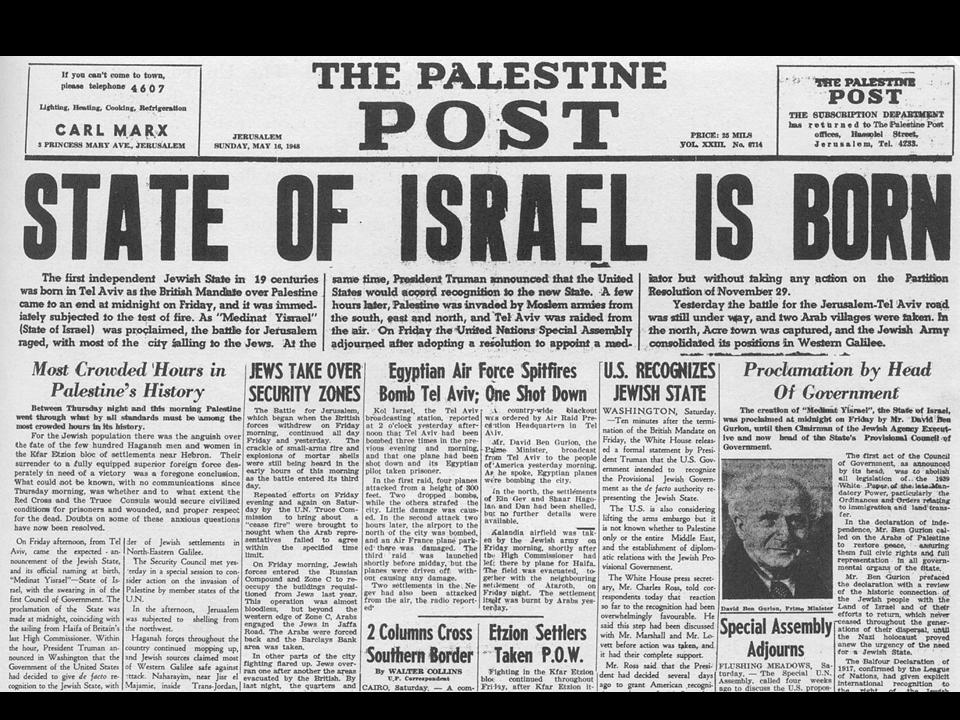
A Potter’s Fire brings The Potter’s Fire
By Kathryn Donev
If I were to ask you if it would be okay for your child to hang out with a friend that actively practices witchcraft, I’m certain you would be appalled by the question and your very quick response would be a sharp, “No”. But when encompassed in a kid friendly fantasy world, a young boy named Harry who studies at a school of wizardry and possesses a simple stick that shoots cool fireballs seems harmless.
I’m reminded of a story in Leviticus in which two boys thought it would be okay to play with strange fire.
It’s a very simple story. Arron’s sons, Nadab and Abihu, who were priests of the wilderness tabernacle took their censers and put unauthorized fire in them. They then were instantly consumed by the Fire that came from the presence of the Lord and died. The Potter’s fire, the true fire, the authorized, familiar fire consumed everything. This is a lesson that teaches that we are not to let our children play with strange fire. A potter’s fire that seems so innocent, could cost your children their life.
It is our responsibility as parents to teach our children that we are not to play with cool looking fire even though it’s only “make-believe”. Witchcraft is real. It is dangerous. It is confusing and The Potter is not a God of confusion. We must protect our children from being consumed.
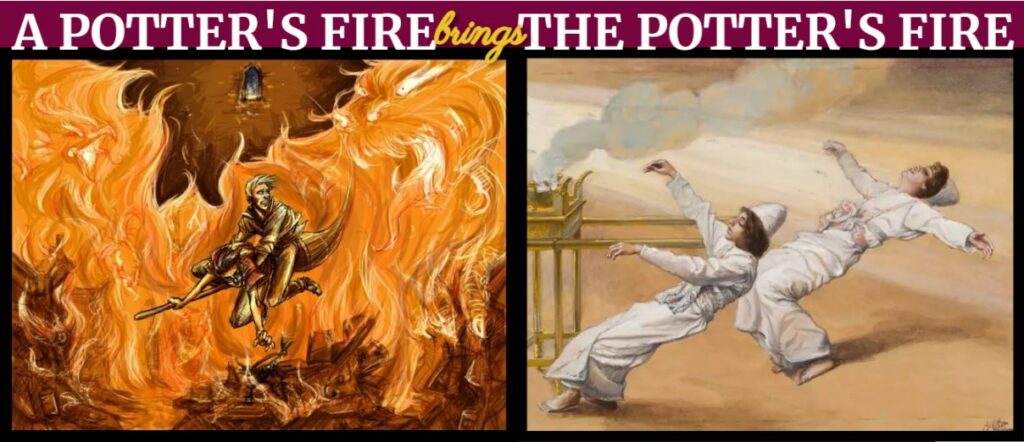
SIGNS of the LAST DAYS: People will not believe the signs
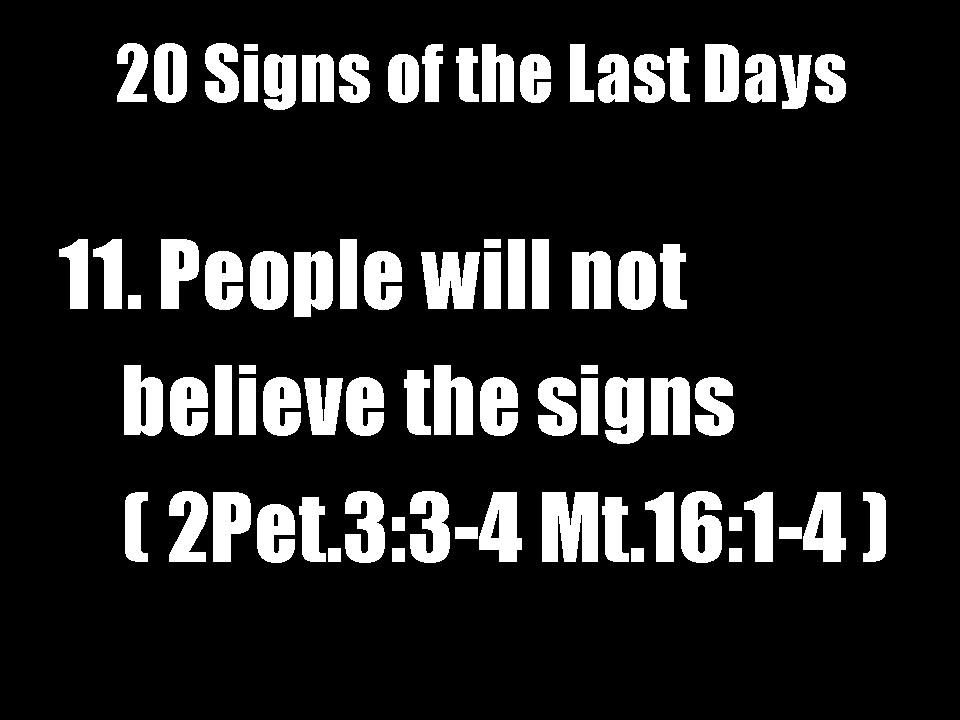
The Story of the 1896 Shearer Schoolhouse Revival at Barney Creek
Schearer Schoolhouse revival
In 1896, a revival was begun in a little schoolhouse near Murphy, North Carolina. Strong opposition to it arose almost immediately. When opponents of the revival tried to stop it violently, the people who lived in the humble home shown below, gave it protection. They had no way of knowing that the revival they protected, would bear the fruit of 15,000 churches being started around the world in the 100 years that followed.
When unknown & unheralded preachers, connected to the Fire-Baptized Holiness Association, William Martin, a Methodist preacher, Joe M. Tipton and Milton McNabb, members of the Baptist church, walked from their homes in Monroe County, TN to begin a revival at the Schearer Schoolhouse in Murphy County, North Carolina, they had no way of knowing that what would happen there would still be blessing people a hundred years later. Possibly as you read this true story, you may labor in a place that seems isolated or far removed from the light of recognition and popularity, but what you do faithfully day by day, is planting seed now that will rise up as blessings throughout the years to come. As the song says, “Little is much when God is in it.” Martin, Tipton and McNabb (to our knowledge there are no photos of them) began the revival with one motive, to share Christ with anyone who would listen so their neighbors to spend eternity in hell.
Though they preached simple sermons about Christ and living a holy life, all during the spring of 1896 and on into the summer, amazing and phenomenal Holy Spirit motivated events took place at the Schoolhouse revival. If someone had asked them what a “Pentecostal” was or how to be one, probably nobody there could have answered the question. They were Baptists, Methodists and prossibly a few Presbyterians attending the schoolhouse revival meetings. Once again, the Holy Spirit demonstrated that He moves where He wants upon the hearts that He chooses, regardless the person’s denominational membership or background.
DENOMINATIONAL MEN OPPOSED THEM
This is not intended to be against denominations. Much can be accomplished when people unite their efforts for spreading the Gospel. We should remember that what happened at the Schearer Schoolhouse, put them in direct conflict with their denominations. It was denominational men who opposed them. The disciples also had that conflict when they were before their organization’s Council, they said, ‘”We would obey God rather than man.”
Charles W. Conn, Church Historian for the Church of God and author of “Like A Mighty Army,” says that over 100 people received what is now referred to as “The Baptism of the Holy Spirit” at the Schearer Schoolhouse revival. That’s a big crowd when one considers the population was very sparse (it’s not too crowded in that area even today). Conn’s historical account says, “They laughed (interesting), rejoiced, praised, spoke in tongues and danced for joy.”
It is believed the Schearer Schoolhouse revival was the first time a group of people had received such blessings anywhere on this side of the Atlantic ocean. There had been scattered reports of individuals, some in the NY meetings held by Phoebe Palmer, that had experienced what people now call “speaking in tongues.”
C.T. Davidson, author of “Upon This Rock,” wrote this description. “In buggies and wagons, by horseback and walking, people came from miles around. The lives of hardhearted men and women were changed and sinners were constrained to make restitution as they sought forgiveness.” Davidson continued, “While many were blessed, others rejected the revival because it conflicted with their rituals, creeds and ecclesiasticism. Many faithful members were persecuted and excommunicated. One church excommunicated 30 of them at one meeting.”
Persecution became so intense until the revival was moved a short distance to a more secure log building. Some accounts say the sheriff, local ministers who opposed the revival and a mob of supporters, tore the building down log by log, piled them up and burned them. Without a place to worship, the meetings were finally moved to the tiny home of W.F. Bryant, a respected Christian leader in the community. Opponents came to his house and demanded that the meetings stop. They showered the home with stones and bullets but W.F. Bryant wouldn’t back down. Those who had received the blessings at the revival, began to believe then, as most Pentecostals do today, that what was happening among them first occurred in the Upper Room on the day of Pentecost and was a continuation of what happened there (The fifth book of the New Testament; Acts, Chapters 1 & 2).
Described by Charles W. Conn as pivotal to Church of God formation, a 1896 revival in Cherokee County, North Carolina provoked charismatic phenomena now familiar in pentecostal circles. (1) It is known that the primary evangelists–Martin, Tipton, and McNabb–were connected to the Fire-Baptized Holiness Association. In view of the imposing number of instances of tongues-speech spread throughout nineteenth century North America, (2) the well-traveled reports of such activities in certain circles and especially the presence of Daniel Awrey at Beniah, Tennessee, it seems reasonable to suggest the possibility that William Martin, Joe Tipton, and/or Milton McNabb were exposed to at least stories about tongues-speech before the 1896 revival. (3)
1. Charles W. Conn, Our First 100 Years: 1886-1986 (Cleveland: Pathway Press, 1986) 17, goes on to ascribe importance to the event because it “prepared the way for the universal outpouring that followed ten years later.” This is a welcome appraisal in light of an earlier judgment often bound up in the North American church’s self-perception, namely [Charles W. Conn, Like A Mighty Army (Cleveland: Pathway Press, 1977) 25]: “… this was the first general outpouring that would continue unabated until it encompassed the Christian world.” Cf. Charles W. Conn, Like A Mighty Army: A History of the Church of God: Definitive Edition, 1886-1995 (Cleveland: Pathway Press, 1996) 29-31. The re-evaluation process can be followed in Charles W. Conn, Cradle of Pentecost (Cleveland: Pathway, 1981) 17, “If it was not the beginning of the modern Pentecostal Awakening, it was certainly the greatest prelude to it.” Then “Church of God” by Charles W. Conn in Encyclopedia of Religion in the South, ed. by Samuel S. Hill (Macon: Mercer University Press, 1984) 160, calls this an “extraordinary event” “without precedent in the region.” On the other hand, Conn’s entry in the same volume on “A.J. Tomlinson,” repeats the older view espoused in Army. Conn’s piece on the revival in DPCM, 161, says the group “formulated no doctrine about it. They simply thanked God for the ‘blessing’ …” He opens the article by calling this “one of the earliest known outpourings of the Holy Spirit in America” in contrast to the closing statement that the “universal outpouring would begin ten years later, 1906, in far away California.” cf. E.L. Simmons, History of the Church of God (Cleveland: Church of God Publishing House, 1938) 11f; Crews, The Church of God, 10.
The official Church of God position seems entrenched in the earlier Conn view. During the 1995 Pentecostal World Conference in Jerusalem, Church of God started a celebration of their 100 years of pentecostal revival. This was to have culminated in the 1996 General Assembly of the Church of God. Meanwhile, this viewpoint continued to play a factor in the view expressed in the 1990’s Church of God web page (http://www.mindspring.com/~cog/cog.html) which originally trumpeted “America’s Oldest Pentecostal Church” then replaced with the equally loud “America’s First Pentecostal Church.”
Contrast this to the 2001 celebration in Los Angles of the birth of Pentecostism hosted by the Pentecostal World Conference, noting the planning began while the PWC was led by Dr. Ray H. Hughes of the Church of God. The Pentecostal Charismatic Churches of North America (PCCNA) signed on as partners and the North American Renewal Service Committee (NARSC) endorsed the event as an effort to celebrate all the offspring of the pentecostal revival.
2. Assemblies of God Heritage has analyzed several such examples like that of W. Jethro Walthall. See Glenn Gohr, “William Jethro Walthall and the Holiness Baptist Churches of Southwestern Arkansas,” Assemblies of God Heritage 12:3 (Fall 1992) 19f. Also: Mary Woodworth Etter, Signs and Wonders God Wrought in the Ministry for Forty Years (Indianapolis, 1916) 117; Wayne E. Warner, The Woman Evangelist (Metuchen: Scarecrow, 1986) 70n33; Brumback, Suddenly, 13; Kendrick, Promise, 35; Frodsham, Signs, 11-17; Cyril Williams, Tongues, 50; Bresson, Ecstasy, 109; Worsfold, Charismatic, 82; Lewi Pethrus, A Spiritual Memoir (Plainfield: Logos, 1973) 20; Aimee Semple McPherson, Lost and Restored as cited by Robert Cornwall, “Primitivism and the Redefinition of Dispensationalism in the Theology of Aimee Semple McPherson,” Pneuma 14:1 (Spring 1992) 37; A.M. Kiergan, Historical Sketches of the Revival of True Holiness and Local Church Polity from 1865-1916 (Fort Scott: Church Advocate and Good Way, 1971) 31; Davidson, Rock 1:298; C.E. Jones, “Tongues-Speaking and The Wesleyan-Holiness Question for Assurance of Sanctification,” Wesleyan Theological Journal 22:2 (Fall 1989) 120.
3. “History of Pentecost,” The Faithful Standard 1:6 (September 1922) 6, noted William Hamby as the fourth evangelist. Also Nettie Bryant, Interview p. 2, and W.F. Bryant, Interview p. 2. R.G. Spurling, Jr., married Barbara Hamby in 1876. So McCauley, “Appalachian Mountain Religion,” 360.
The Practice of Corporate Holiness within the Communion Service of Bulgarian Pentecostals
by Dony K. Donev, D.Min.
Historical and Doctrinal Formation of Holiness Teachings and Praxis among Bulgarian Pentecostals (Research presentation prepared for the Society of Pentecostal Studies, Seattle, 2013 – Lakeland, 2015, thesis in partial fulfillment of the degree of D. Phil., Trinity College)
Pentecostal identity was corporately practiced and celebrated within the fellowship of believers through the partaking of Holy Communion. We have otherwise extensively described the Communion service among Bulgaria’s conservatives in Theology of the Persecuted Church (Part 1: Lord’s Supper https://cupandcross.com/theology-of-the-persecuted-church/). Therefore, here we offer just a brief overview of its main characteristics.
- It was done in a time and place directed by the Holy Spirit
- If some did not have water baptism they were taken to a close by river to be baptized while the rest of the church prayed
- Upon returning, if some did not have yet the baptism with the Holy Spirit, the church would pray until all were baptized
- It began with each participant audibly asking all members for forgiveness
- they would also audible respond with the words: WE FORGIVE YOU and may GOD also forgive you
- The communion bread was prepared on the spot baked by women whose names were also reveled in prayer
- All drank from one cup, which strangely for their strict practice of abstinence from alcohol, was filled with alcoholic wine
- Communion was served only to those who had the fullness of the Spirit, and had just requested and were given forgiveness
- The presbyter would quote Jude 20 to each partaking believer thus directing them to audibly speak in tongues before they could participate in communion
- Interpretation often followed to confirm the spiritual stand of the believer
- If there were any leftovers, the Communion elements were served again until all was used
- Communion was incomplete without foot washing as a seal that the whole sacrament was fulfilled.
The US Plans Cooperation with Bulgaria

The US plans to deepen its cooperation with Bulgaria, Moldova, Georgia, Ukraine and Romania. This is clear from the “Black Sea Security Act” introduced in the US Congress.
The document states that the priority will be activities such as intelligence and monitoring of Russian operations in the Black Sea region, the creation of an international headquarters to be responsible for the planning, preparation, implementation and coordination of multinational military forces. Fighting Russian disinformation with the support of the United States is also part of the priorities.
The document recognizes the Black Sea region as an arena of Russian aggression and declares that it is in the interest of the United States to support efforts to prevent the spread of further armed conflict in Europe.
The US ambassador to Bulgaria, Kenneth Merten, recently recalled the document, saying that the document will focus the issues of the region, because there are serious problems in certain parts of the Black Sea.
The second 10 days of the extended Russian military exercise in the economic zone of Bulgaria are currently underway.
CHAPLAINCY MODEL WITHIN THE BULGARIAN ARMY (Submitted to the Manfred Wörner Foundation)
As the country of Bulgaria is now a member of NATO and awaits acceptance into the European Union in 2007, international experts are working with various government institutions and consultant agencies to create an atmosphere in which the Bulgarian mindset can experience a new national revival in the 21st century. NATO’s involvement in this process serves as a catalyst both for reinforcing Bulgaria’s infrastructure and attracting international interest in the country’s affairs. Issues concerning national security, military involvement, international relations, economical development and ethnic diversity are continuously and carefully taken into consideration. However, one issue still remains untouched neither by NATO’s official position in Bulgaria, nor by the Bulgarian government. This is the issue of faith.
Three reasons make such topic of relevant importance. First, Bulgaria claims traditional and historical religious belongingness to the Eastern Orthodox Church. Furthermore, the centuries of religious wars on the Balkans have formed a complete dependency on ethnic religiosity, making faith the prime factor for animosity, hatred and genocide. Finally, the issue of morale and morality in the armed forces remains open for any military unit and will need to be addressed sooner or later in the context of NATO’s presence in Bulgaria.
This research will show how the above issues could be resolved by the presence of a NATO paradigm for chaplaincy within the Bulgarian Armed Forces. The paper will explore the current developments of chaplaincy in Bulgaria on three levels: church, society and government. It will then present the case of “underground chaplaincy” in Bulgaria and provide an appropriate solution to be implemented through the newly established Bulgarian Chaplaincy Association. The conclusion will outline the benefits that can be achieved by a partnership between local NATO representatives and the Bulgarian Chaplaincy Association who combine efforts to restore the spirituality within the Bulgarian Army through the legalization of chaplaincy ministry within its structures.
Bulgarian Chaplaincy Association and Master of Chaplaincy Program Ministry 2023 Priority Review
In the midst of the 2020 pandemic, the Bulgarian Chaplaincy Association was able to continue in active field ministry as well as its Master of Chaplaincy Program in affiliation with New Bulgarian University. Another doctoral graduate from the chaplain’s program graduated in 2020 with special focus of ministry in the Eastern part of Bulgaria. The Association has not completed its task yet, namely, legalizing chaplaincy within the Bulgarian armed forces, but major milestones have been accomplished. Our 2006 proposal submitted to NATO’s Manfred Wörner Foundation is being implemented as foundational to the doctrine and direction of the Association, being now used by other fields and states as well.
As prisoners in Bulgaria were not generally released during the Pandemic, prison chaplaincy continued through the Sofia region office led by one of our students from the Masters’ Program.
Hospital chaplaincy has remained a challenge as many hospitals, especially in mid-Bulgaria, struggled to provide adequate healthcare during the pandemic crises.
International chaplaincy among Bulgarian migrants have continued as allowed by shutdown orders in various countries in the European Union. On several occasions large communities of migrant workers were forced by the economic challenges to return to Bulgaria, which has presented additional opportunities for chaplaincy ministry.
Institutional chaplaincy has been the weakest point as in the past decade, as interweaving religion and business in the Bulgarian context of ministry has remained a strong test for the endurance of chaplaincy. However, the corporate ecosystem in Bulgaria is progressively changing as foreign investors are continuing to establish regional offices and labor opportunities in the country.
Haskovo, Harmanli and the Strandja region toward the Turkish border south of Yambol have been a focal point of chaplaincy among foreign migrants residing in Bulgaria. We have already established relationship with para-church organizations that work successfully among Muslim migrants in the Scandinavian countries. Their experience and training within the Bulgarian context of ministry has been indispensable.
Finally, social involvement through community chaplaincy has been developing well in the past several years, especially in major project areas like the second largest Bulgarian city of Plovdiv, the region of South Bulgaria, along the Black Sea especially in Bulgaria’s largest sea port at Varna, and along the Danube River including the port cities of Silistra, Rousse, Svishtov and all the way to Vidin.
Also important [click to read]:
- U.S. Department of State recognizes our chaplaincy efforts in Bulgaria
- Bulgarian Chaplaincy Association: Integration Proposal with Local NATO Programs
- Bulgarian Chaplaincy Association: Vision and Resolution
- Chronology of our role and involvement in developing Church of God chaplaincy in Bulgaria since 2001
- Master’s of Chaplaincy Ministry Program in Bulgaria Reflections
- The Past Decade of Chaplaincy in Bulgaria (2006-2016)
- Related Publications and Presentations by Cup & Cross Ministries International



